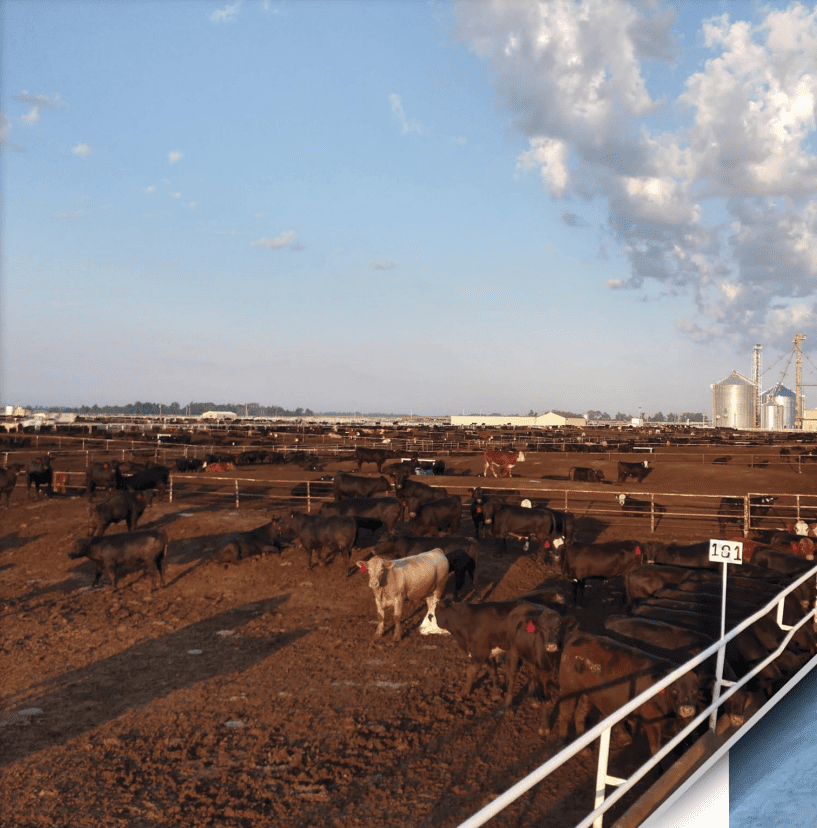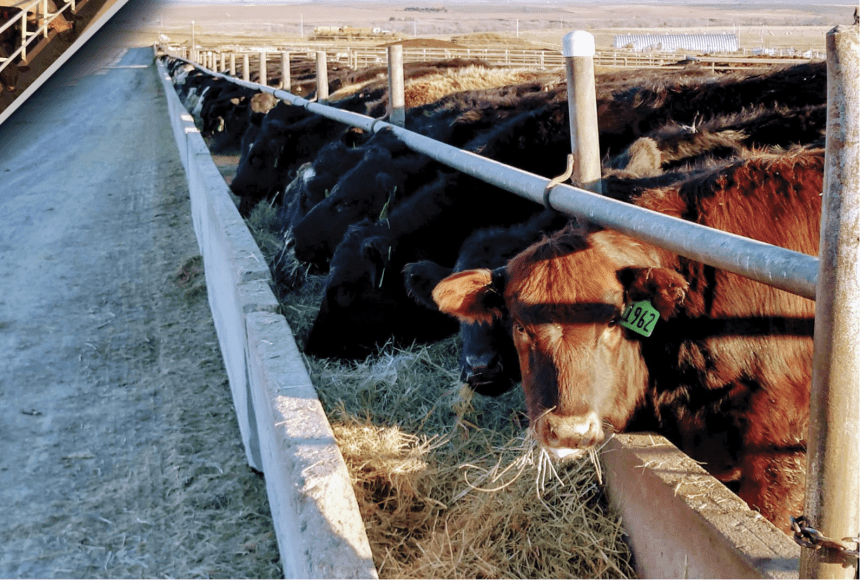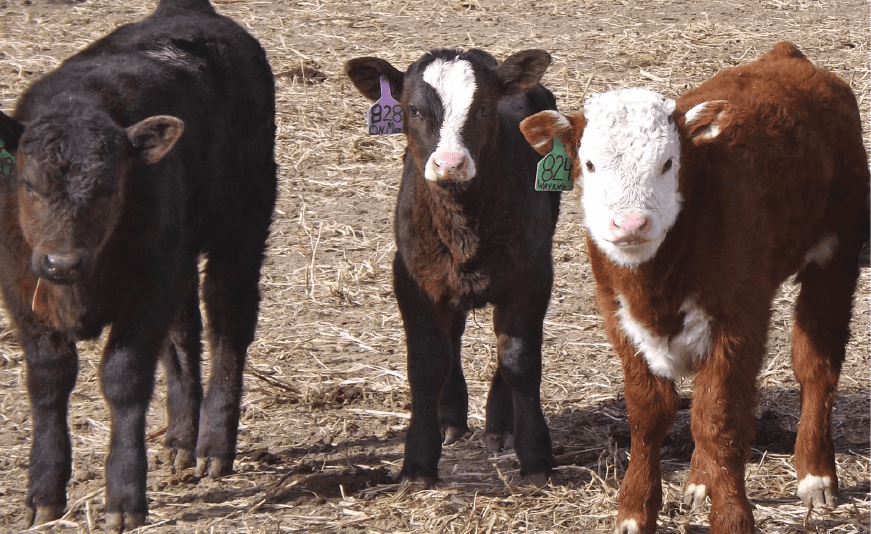

Risk is something we all deal with every day, and it likely impacts almost every decision we make.
From “What is the risk if I choose to eat that spicy food?” all the way to “What is the risk of driving on an icy road to visit a client?”, experience is supposed to constantly train our brains to quickly evaluate risks and allow us to decide good or bad, yes or no, etc.
While experience is supposed to train our brain, when it comes to the procurement of high-risk calves, that is not always the case.

To me, high-risk groups of cattle are defined by one or multiple circumstances such as weaned status, the number of purchase groups that are comingled, distance traveled, location (state/country, etc.), weight, weather, specific sale barn, backgrounded, and/or grass.
Some may say it takes multiple circumstances to designate a group of cattle as high risk; however, in my opinion, there is one circumstance that automatically designates a group as high risk and that is weaned status.
Un-weaned calves are always high risk.
If you add other circumstances on top of that, they become “ultra high risk.”

Imagine a 5-7 month old calf that has always had the protection of his mother, received excellent quality, nutrient-dense milk from his mother, grazed green grass, drank fresh water, and maybe ate a little creep feed.
He really has had no stress that he remembers other than maybe fighting a few flies and perhaps the castration experience four months back.
Until now, that animal has never really had a bad day.
Then one morning, you separate him from his mother, load him on a truck and haul him to a sale barn or a feedlot.
In terms of the sale barn experience, he probably touches concrete for the first time, he gets sorted from his sisters and likely his little brothers, he might get some access to dry hay, and he might have some access to water but he has to drink out of an apparatus he has never seen before.
Then he is moved down concrete alleys and through the sale ring before returning to a holding pen for anywhere from 2-24 hours.
Then he is loaded back on a truck and hauled to a feedlot that could be 12 hours or more away.
When we think about it, that calf went from an all-you-can-eat-and-drink buffet and a La-Z-Boy recliner to standing on aluminum and concrete with minimal (if any) feed and water and all sorts of pathogen exposure.
Basically, it is the worst 48-72 hours of his life.
I know we all understand the concept of bawling or un-weaned calves, but I wanted to describe the experience because when we receive those calves at the feedlot, I feel that what the calves just went through often gets overlooked.
We recognize that weaned is always better and there are ways to improve the weaning and sale barn experience.
But un-weaned cattle are usually cheaper, so there is opportunity as long as you can manage them.
In my opinion, too many folks that are up for the un-weaned calf experience psych themselves up and think, “All I need to do is ride these cattle twice a day and pull the sick ones on time.”
Of course, that helps, but there is so much more to it.

In my opinion, the first thing all cattle, especially calves, need to see when they arrive at the feedlot is clean, fresh water and they must have plenty of access to it.
Hydration is the first step in getting all the systems in the body back to a steady state. Access to clean, freshwater is probably the easiest thing you can do but is often overlooked.
Next, I like to have the folks acclimate the calves to people and the pen.
Remember, you are working with a calf that you could almost walk up to when it was at its mother’s side that now has a flight zone similar to that of a white-tailed deer.
You are the new protector and provider; they need to get used to the people taking care of them and the new place they are at.
This takes multiple experiences in the pen with the cattle the first few days, not just a few quick drive-bys in the pickup.
Often times, calves arrive in the middle of the night before anybody is available to acclimate the calves to people and the pen as well as before there is adequate light to do so.
In these situations, as well as during business hours, the receiving pen needs to have a comfortable place for the calves to rest after they have received their water.
Of course, they are bawling and may be walking the fence, but if they want to rest, there has to be a comfortable place to lay that has been bedded up.
Bedding is a must for un-weaned calves. It is amazing how fast calves will go to bedding whether it is hot or dry, cool or wet, or even cool and dry.
Remember the calves were in a comfortable environment when they left their mothers and they have basically been awake for 2- 3 days.
We need to promote rest by getting them as comfortable as we can.

The last thing we need to do to get un-weaned calves started right is get them ruminating. The gut is the gateway to many things good and bad.
It is responsible for uptake of wonderful nutrients for growth and health, but if it is disrupted, it can also be a vector for introducing pathogens to specific systems throughout the body.
Proper rumination and cud chewing in a naïve animal will promote all systems in the body to function properly as well as increase the efficacy of a vaccine’s ability to help build immunity and an antibiotic’s ability to fight off disease.
Feed ingredients with larger particle sizes or a significant roughage value are a must to get cattle ruminating.
I like to remind feeders that roughage needs to be rough. The roughage source also needs to be something calves will eat.
The material used for bedding can definitely be a low-quality fiber source and the calves will eat some of it, but the material we provide them to get them ruminating needs to be dry, have a high roughage value, and be average to above-average quality.
Enough room for every calf to get to the bunk and eat comfortably without having to fight too hard is also a must.
After calves are ruminating, I like to have the feeders I work with follow specific intake protocols that bring the cattle up slowly to help keep the calves ruminating and build their intake.
When feeders keep the calves interested in the bunk and the feed in the bunk consistent, there is less of a chance any disease pressure would be related to what is happening in the gut.
Any sign of anorexia within the first 30 days for an un-weaned calf should be an immediate cause for further evaluation.
If un-weaned calves leave any kind of feed within the first 30 days, something is wrong.
Either they are sick, there is bad weather, or the feed caller is pushing them too hard, which in turn, can make them sick.
I get asked quite often about specific minerals, vitamins, direct fed microbials, and other products to help with high-risk calf nutrition.
My answer is yes, some of those are important and some have good research to back up claims, but you have to be able to get it in the animal for it to work and more is not better.
A calf’s body will only utilize the specific amount of any mineral or vitamin it needs; any excess gets excreted in urine or feces.
Yes, mineral and vitamin deprived situations will affect the immune system’s ability to react to pathogens.
However, getting a calf’s mineral status repleted will only happen with consistent intake of a balanced ration.
It is similar to when you arrive at a hotel and it is 85 degrees in the room. If you want the temperature to get to 70 degrees, setting the thermostat to 60 will not get it there any faster.
It is limited by what the air conditioner can do, just like the mineral and vitamin status is limited by what the gut can do.

In conclusion, there are many wonderful nutrition protocols and animal health protocols but the most important things to execute when receiving un-weaned and high-risk calves are proper hydration; acclimation to pen, people, and bunk; rest, rest, rest; and rumination.
If any of these items are compromised, it will not work and you may need to consider using a backgrounder or buying lower risk cattle.
Receiving un-weaned and high-risk calves is not for everyone, but there are some feeders that are very good at it, and I am lucky because I get the pleasure to work with a few of them.
Kyle Vander Pol, Ph.D., is a Consulting Nutritionist with Midwest PMS, LLC and works with clients in Arkansas, Iowa, Kansas, Missouri, Nebraska, South Dakota, Tennessee, and Texas.
Get all Doc Talk episodes straight to your email inbox!